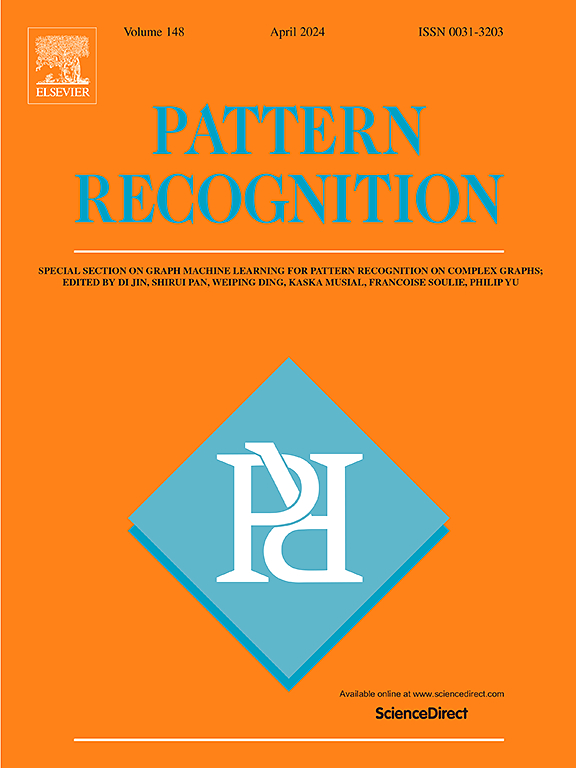Image dehazing via self-supervised depth guidance
IF 7.5
1区 计算机科学
Q1 COMPUTER SCIENCE, ARTIFICIAL INTELLIGENCE
引用次数: 0
Abstract
Self-supervised learning methods have demonstrated promising benefits to feature representation learning for image dehazing tasks, especially for avoiding the laborious work of collecting hazy-clean image pairs, while also enabling better generalization abilities of the model. Despite the long-standing interests in depth estimation for image dehazing tasks, few works have fully explored the interactions between depth and dehazing tasks in an unsupervised manner. In this paper, a self-supervised image dehazing framework under the guidance of self-supervised depth estimation has been proposed, to fully exploit the interactions between depth and hazes for image dehazing. Specifically, the hazy image and the corresponding depth estimation are generated and optimized from the clear image in a dual-network self-supervised manner. The correlations between depth and hazy images are exploited in depth-guided hybrid attention Transformer blocks, which adaptively leverage both the cross-attention and self-attention to effectively model hazy densities via cross-modality fusion and capture global context information for better feature representations. In addition, the depth estimations of hazy images are further explored for the detection tasks on hazy images. Extensive experiments demonstrate that the depth estimation not only enhances the model generalization ability across different dehazing datasets, leading to state-of-the-art self-supervised dehazing performance, but also benefits downstream detection tasks on hazy images. Our code is available at https://github.com/DongLiangSXU/Depth-Guidance-dehazing.git.
通过自监督深度引导进行图像去毛刺
自监督学习方法在图像去毛刺任务的特征表征学习中表现出了很好的优势,尤其是避免了收集朦胧-干净图像对的繁重工作,同时还能使模型具有更好的泛化能力。尽管深度估计在图像去毛刺任务中的应用由来已久,但很少有研究以无监督的方式充分探索深度和去毛刺任务之间的相互作用。本文提出了一种在自监督深度估计指导下的自监督图像去毛刺框架,以充分利用深度和灰度之间的相互作用来进行图像去毛刺。具体来说,朦胧图像和相应的深度估计是以双网络自监督方式从清晰图像中生成并优化的。深度和朦胧图像之间的相关性在深度引导的混合注意力变换器块中得到利用,该变换器块自适应地利用交叉注意力和自我注意力,通过跨模态融合对朦胧密度进行有效建模,并捕捉全局上下文信息以获得更好的特征表示。此外,我们还进一步探索了朦胧图像的深度估计,以用于朦胧图像的检测任务。广泛的实验证明,深度估计不仅增强了模型在不同去毛刺数据集上的泛化能力,从而实现最先进的自监督去毛刺性能,而且还有利于朦胧图像的下游检测任务。我们的代码见 https://github.com/DongLiangSXU/Depth-Guidance-dehazing.git。
本文章由计算机程序翻译,如有差异,请以英文原文为准。
求助全文
约1分钟内获得全文
求助全文
来源期刊

Pattern Recognition
工程技术-工程:电子与电气
CiteScore
14.40
自引率
16.20%
发文量
683
审稿时长
5.6 months
期刊介绍:
The field of Pattern Recognition is both mature and rapidly evolving, playing a crucial role in various related fields such as computer vision, image processing, text analysis, and neural networks. It closely intersects with machine learning and is being applied in emerging areas like biometrics, bioinformatics, multimedia data analysis, and data science. The journal Pattern Recognition, established half a century ago during the early days of computer science, has since grown significantly in scope and influence.
 求助内容:
求助内容: 应助结果提醒方式:
应助结果提醒方式:


